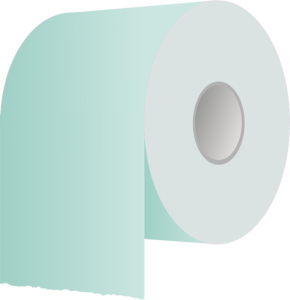 Major conglomerates like Procter & Gamble, Kimberly Clark and Georgia-Pacific earn more than $31 billion annually from toilet paper sales. But while this industry is certainly lucrative, it’s not exactly innovative. After all, one of the few significant developments these companies have made in recent decades is to sell larger rolls. Brands such as Charmin and Quilted Northern treat their products like commodities, meaning that they compete primarily based on price. By concentrating on value, the biggest names in toilet tissue don’t spend much time thinking about other qualities like packaging or sustainable production methods.
Major conglomerates like Procter & Gamble, Kimberly Clark and Georgia-Pacific earn more than $31 billion annually from toilet paper sales. But while this industry is certainly lucrative, it’s not exactly innovative. After all, one of the few significant developments these companies have made in recent decades is to sell larger rolls. Brands such as Charmin and Quilted Northern treat their products like commodities, meaning that they compete primarily based on price. By concentrating on value, the biggest names in toilet tissue don’t spend much time thinking about other qualities like packaging or sustainable production methods.
A new group of toilet paper startups is disputing this assumption, however. According to such cheekily named companies as No. 2, Who Gives a Crap, and Peach, today’s consumers want high-quality products made in environmentally friendly ways. This includes toilet paper, which is mostly mass-produced from wood pulp collected from old forests in Canada. Rather than rely on this unsustainable supply, modern toilet paper startups use recycled paper as well as bamboo imported from China. Many of these brands also design colorful wrapping for their individually packaged rolls, instantly transforming this basic household item into something decorative. The startup Peach takes this idea a step forward by printing a pink peach on each sheet. “We believe in moments for ourselves,” said Peach CEO Aaron Doades. “To give every part of us—and our bathrooms—something better.”
Of course, this premium experience comes at a cost. Although most standard toilet paper sells for under $1 per roll, Who Gives a Crap starts at $1 while Peach’s prices run as high as $3 per roll. Still, these companies believe they can appeal to consumers who want more than Charmin can offer. Along with pointing to the success of other lifestyle brands like Dollar Shave Club and Harry’s, toilet paper startups also aim to follow the example set by the original inventor of TP. More than 150 years ago, entrepreneur Joseph Gayetty started selling rolls of toilet paper for $1, equivalent to nearly $30 in today’s money. While it began as a luxury item, toilet paper soon became a must-have for every American family. Today’s TP startups are hoping to recapture this legacy as they take on the multi-billion dollar toilet paper industry.
Questions:
- How do today’s toilet paper startups use packaging to transform their products?
- Do you think consumers will be willing to pay more money for premium toilet paper? Why or why not?
